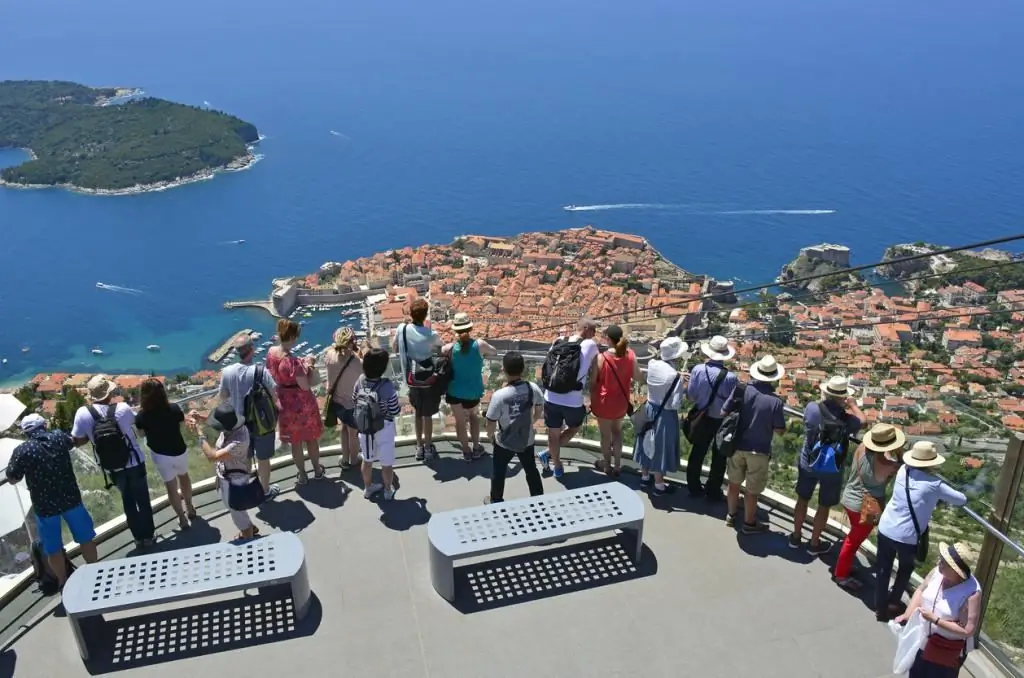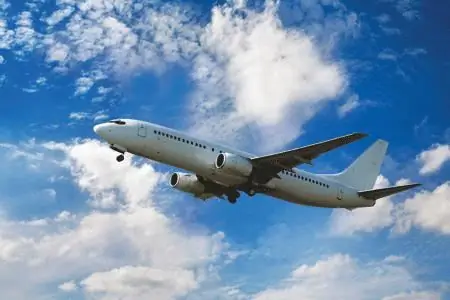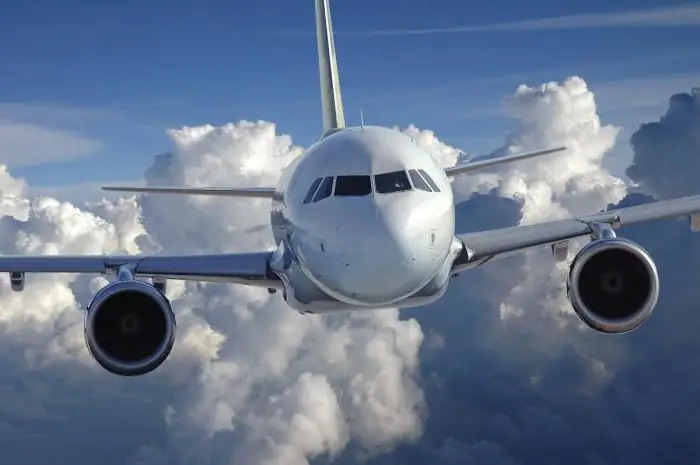- Author Harold Hamphrey [email protected].
- Public 2023-12-17 10:06.
- Last modified 2025-01-24 11:10.
Berlin's public transport network consists of 1,700 kilometers of bus routes, 190 kilometers of tram tracks, and numerous train and metro connections. Such a diverse system makes it possible to quickly, safely and comfortably get to any part of the city. Public transport in Berlin is divided between the spheres of influence of several companies.
Who is responsible for what?

Most of all services are provided by the Berlin Transport Company (BVG). It is Germany's largest public transport company. It began its work at the beginning of 1929, so they have many years of experience and an excellent network. The efficient operation of the BVG has provided Berliners with a convenient transport network, so that every resident or tourist can comfortably use buses, trams, boats or subways to get to their destination. BVG transports more than 906 million passengers every year, which is approximately 2.4 million daily.
The second largest in Berlinthe company that deals with transportation within the city is S-Bahn Berlin GmbH. She runs the city trains. About 40% of all services in the German capital are provided by this company. They serve 15 lines, which help more than 1.3 million people move around the city every day.
All public transport in Berlin covers an area of 1,000 square kilometers. And just over 3.4 million people live here.
The quality of BVG and S-Bahn Berlin services not only affect the mobility of Berliners within the city, they shape the level of quality of living here. Travelers from all over the world, pensioners, young people and other city guests are highly dependent on how well such an unremarkable part of city life as public transport will work.
It is worth noting that the quality of public transport in Berlin is constantly improving and improving. This is due not only to the development of technology, which simplifies some aspects, but also to the increase in environmental standards for doing business. For example, buses in Berlin use only diesel fuel without sulfur. They are equipped with filters that reduce carbon and soot emissions to a minimum.
Interesting statistics
The U-bahn consists of 10 lines with a total of 173 stations. At night from Friday to Saturday, as well as from Saturday to Sunday and before public holidays, trains on 8 lines run every 15 minutes. During off-hours, the metro is replaced by buses that travel along similarroutes.
The Berlin S-Bahn consists of 15 lines with 166 stations. Trains run at night in the same way as the subway.
Metrotram consists of nine lines that operate all day.
Trams have 13 lines, metrobuses operate on 7 round-the-clock routes.
196 routes have been created for buses, 65 of them operate all day long and run every half an hour.
The city has six ferry routes, three of which operate all year round, without breaks.
Comfort and convenience
Most of the public transport routes have stops equipped for the convenience of the disabled. At night, there are about fifty points of contacts with security. Most facilities and vehicles themselves have CCTV under medical supervision.
Stopping is mandatory for all types of public transport, except for ferries. Almost all vehicles have special electronic displays with the names of stops.
Tickets and Fares

There are three fare zones in Berlin:
- Zone A - it is surrounded by a train ring and captures the entire city center.
- Zone B - extending to the outskirts of the city.
- Zone C - captures the surroundings of the capital, such as Potsdam, the airport in Schönefeld and Oranienburg.
Depending on your needs, you can get a combined ticket for AB zones,BC or ABC. The standard fare is designed for adults, tickets for children from 6 to 14 years old have a lower cost. Children under 6 travel free on public transport routes.
You can buy a ticket at one of the many BVG sales centers. You can also buy them from vending machines located at bus stops. The machine runs non-stop and the menu supports six languages: English, German, French, Turkish, Spanish and Polish.
Some buses and trams have vending machines where you can also buy a ticket. In them you can buy a ticket for a single trip, for a short walk, as well as a day-pass.
Additional composting is not required, they will be valid immediately after you pay for them. Inside the trams, the machines can only accept coins, while on the buses, the drivers won't give you change for oversized bills.
Children from 6 to 14 years old can purchase tickets at a reduced cost. Children under the age of six do not need to buy tickets. Also, you do not need to pay anything extra for prams, dogs. An adult who has already bought a ticket carries them free of charge. An exception to this is on ferries, where only 3 children under the age of six can pass at no extra charge. Also for the second dog you need to take a ticket at reduced rates. When buying a one-time ticket, you need to take preferential tickets for both dogs. If you enter transport with a bicycle, then you need to take a ticket at a special rate.
Single trip ticket

Such a ticket would be a great solution for those who do not go somewhere in Berlin so often. On a normal route, you can go in any direction, regardless of the number of changes. The ticket will be valid for two hours.
During this time, a person can change the bus or train and interrupt his trip an infinite number of times. However, reverse or circular driving is not permitted. A return trip is a return to the original station on that line. Circular - when, using other routes, a person returns to the original or neighboring station, or gets to the station from which he can get on the first trip.
By tram, metro, bus or train, you can move freely within all three zones. The ticket to be validated is validated immediately after the trip has started.
Day travel
With this ticket you can go wherever and as much as you like. It will be valid all day, the date of which is indicated on it. Once you use it, it will be valid until 3am the next day. Day Pass not transferable.
Ticket for four trips
This is a specially designed offer that is great for regular commuters.
This offer applies exclusively to zone AB. The ticket has four separate sections, each of which is punched before the start of the trip. One section applies to one trip or one person.
Each of these sectionsallows the passenger to make an unlimited number of transfers during a trip in one direction, using a standard route, or if so due to the schedule. This function is valid for two hours after you have validated your ticket. The same rules apply as for a one-time ticket. Only children between the ages of 6 and 14 can purchase a ticket at a reduced cost.
Sold such tickets in every ticket center of Berlin transport companies, as well as in every vending machine, which is located near metro stations and at city train stops.
This ticket is not valid for buses and trams, because only validated tickets are used for such modes of transport. When buying a ticket for four trips in a special machine, be sure to pay attention to the fact that it consists of four sections, each of which takes approximately one minute to print.
Week pass
This ticket is valid for seven days. The countdown starts from the day that is indicated on the ticket, or from the moment of the first trip and until midnight seven days later. For example, if you validate your ticket on Tuesday at 9:30, it will be valid until 24:00 on the following Monday.
On weekdays after 20:00, as well as on weekends and official holidays, no more than three children aged six to fourteen years old can be transported free of charge on one ticket for an adult. According to the current conditions, the possibility of such a free trip ends at 3 a.m. onthe next day, if it is not a public holiday or weekend. Do not forget that holidays in Brandenburg and Berlin may differ in dates. The ticket cannot be transferred to anyone.
You can buy such a ticket at any vending machine or a specialized box office.
Ride on the bus

Berlin's double deckers are large yellow double-decker buses that are the main symbols of the German capital. More than 1300 buses ply the roads every day, carrying passengers.
There are 150 daytime and 54 nighttime routes in Berlin. The total length of all bus lines is 1,626 kilometers during the day and 751 kilometers at night. The number of stops is approximately 10,000. It should be noted that the predominant number of buses on the routes is designed for people in wheelchairs.
After 20:00 in zones B and C, you can ask the driver to stop at a place where it is more convenient for you to get off, and not at the classic stop. However, first you need to make sure with the driver that such a stop is possible. Exit through the front doors. Only once the bus can stop at an unintended place. Moreover, the driver will refuse to stop you if you choose an area that is dangerous for this, such as construction sites, icy and slippery surfaces, and parking lots for cars.
At night, routes operate in order to secure the movement of lost tourists or people who like to have fun in the evening. Routes fromstops are always indicated on the official website.
Metro

The Berlin underground is considered the largest in Germany, as well as one of the most modern throughout Europe. However, it is one of the most expensive forms of public transport in the country. The metro is famous for its high level of comfort, as well as the high environmental standards that the metro maintenance company has set for itself.
Trains run every 3 to 5 minutes. In the subway, you can easily catch a connection for various mobile operators. Moreover, you can easily recharge your smartphone at the ticket machines.
Trams

Berlin trams are renowned for being the largest network of tracks in all of Germany. Trams are an integral part of the entire metropolitan landscape. It is difficult for local residents to imagine their favorite city without this transport.
About 187 kilometers of tram tracks have been laid in the city. If you add up the length of all day and night lines, the result is a staggering 430 kilometers. Trams make about 5,300 trips daily, transporting more than 560,000 people in different directions.
There are approximately 789 tram stops throughout Berlin. It turns out that each of them is located approximately every 450 meters. The average transport speed is 19 km/h. Tram tracks run along both wide and largeavenues and narrow streets.
You can also take advantage of Berlin trains. They will help you get to your destination just as efficiently and comfortably.
Order a taxi

Taxi in Berlin is represented by a wide variety of vehicles. If you do not have the time or desire to use public transport, you can always enjoy the comfort of this solution.






